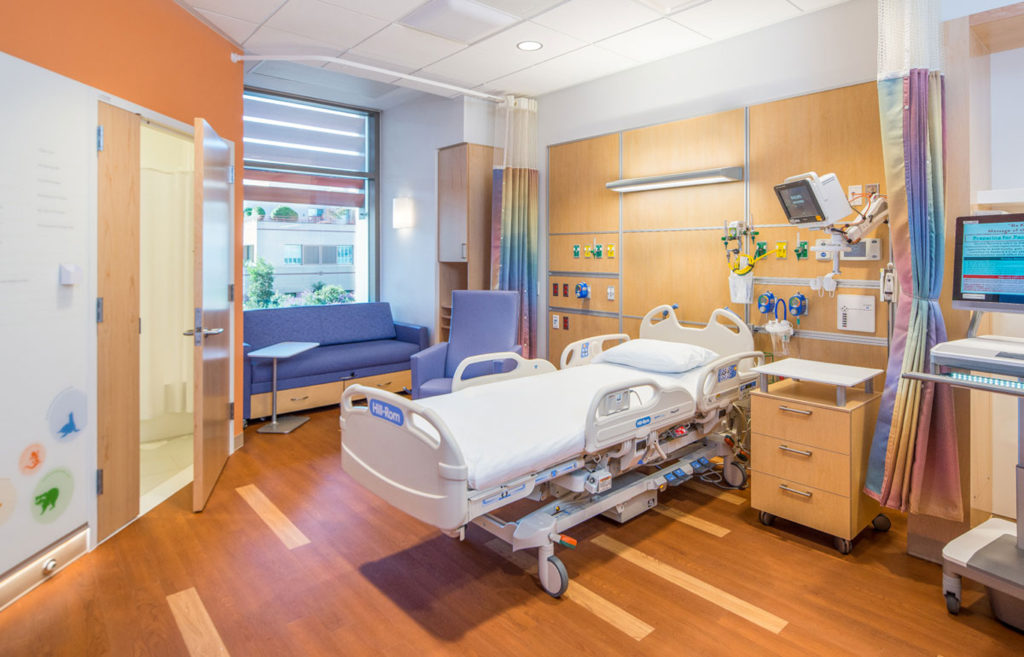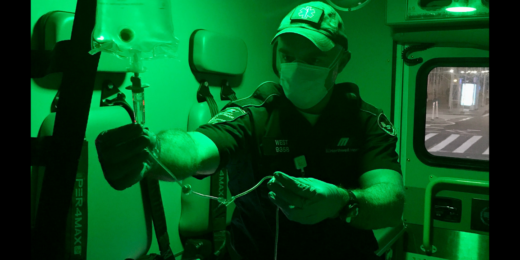In children, respiratory symptoms of COVID-19 are rare. Since the pandemic began, most of the children hospitalized at Lucile Packard Children's Hospital Stanford with the SARS-CoV-2 virus are asymptomatic and being treated for other medical problems.
But a few kids and teens have had COVID-19-related illness. Critical care physician Alan Schroeder, MD, has been on the frontlines, going above and beyond to ensure these kids return home safely.
I spoke with him recently as part of our Voices of COVID series to learn more.
How does your team in the pediatric intensive care unit help children who have respiratory symptoms of COVID-19?
It's important to recognize the dedication of our nurses and respiratory therapists -- they spend more time than anyone else at the patients' bedsides.
Although physicians certainly need to go into the room periodically to examine the patient and perform occasional procedures, a lot of minute-to-minute management can occur outside a patient's room, looking through the glass door: From there I can see the patient, the monitor, the ventilator and the pressures generated on the vent.
But the nurses need to suction the patient's airway, move the patient, adjust infusions, and give new medicines and extra sedatives, while the respiratory therapists need to give breathing treatments and adjust the ventilator. It means frequently donning and doffing personal protective equipment, and having to think about that on top of trying to rush into the room to help the patient.
So much hinges on the expertise of our excellent nurses and respiratory therapists who really understand the nuances of ICU care. Thankfully, we have had adequate staffing throughout the pandemic. But seeing our RNs and RTs manage our sickest COVID patients gave me immense appreciation for how hard it must be to provide high quality care when a hospital is overwhelmed.
Our entire ICU team deserves huge kudos right now. Our trainees, including residents and fellows; our nurse practitioners; our hospitalists; social workers; child life specialists; nutritionists; occupational, respiratory and speech therapists; pharmacists; housekeepers, and more -- everyone's job has become more challenging during the pandemic, and we are so proud of and grateful for their hard work.
As a pediatric intensive care physician and a scientist, what has it been like to care for the most seriously ill kids?
The numbers are small enough in pediatrics that there is still very much a flavor of the unknown. This virus is quite different than the other respiratory viruses we've managed. Some of that is because this virus infects the endothelium of blood vessels, their inner lining.
As a clinician and a scientist, new diseases are incredibly fascinating for me. But it's also intimidating and humbling to realize how little we know, and realize we have to do the best we can with limited knowledge.
Most of our PICU patients with COVID-19 have been managed without requiring placement of a breathing tube, known as intubation.
However, I was on service for one of our sickest patients.
That patient got intubated and was on maximum ventilator support, and I even brought our ECMO team to the bedside because I had concerns that maybe we were heading that direction. ECMO, or extracorporeal membrane oxygenation, is a device that acts as an external lung, giving oxygen and removing carbon dioxide directly to and from the patient's blood. ECMO is an option in some cases where the lungs are in such bad shape that ventilation isn't enough, but it is challenging and risky.
Fortunately, over the course of a few weeks we were able to get this patient through the illness on the ventilator without requiring ECMO, and ultimately to the point of walking out of the hospital. It was quite gratifying to have that patient make it through.
Stanford Children's Health opened a new hospital building in 2017, which now houses the PICU. How has that helped?
In our new facility, every patient has their own room. I think that has been tremendously influential in limiting infection transmission rates within the hospital.
All our new rooms have fold-out beds for family members and private bathrooms, allowing a parent to stay with their child. Parents have been incredible allies for our care, and have been very appreciative that they could stay with their children.

What are some of the unique Stanford strengths that your team has brought to meeting the needs of kids affected by COVID-19?
So far, the PICU has treated about 10 patients with multi-system inflammatory syndrome in children, or MIS-C, a rare autoimmune complication of COVID-19 that can occur in children weeks to months after the initial viral infection.For children with MIS-C, there is a huge multidisciplinary team that manages these patients.
We also have some of the leading pediatric infectious disease voices in the country, who are at the table for all the important discussions at a national level around vaccine allocation, treatment decisions, school reopening. That means that we are able to hear directly about the most relevant, timely issues. And the infectious disease team is directly involved in caring for all our COVID patients.
You've been a critical care doctor for many years. What stands out for you for you about performing this role in a global pandemic?
We're used to being together for meetings and care conferences. Now we're doing that via videoconference. It's totally different. For educational conferences with our colleagues and fellows, this has meant a loss of camaraderie. And the care conferences feel less personal too when they occur on Zoom.
Our team in the PICU, we're a resilient group. Despite the pandemic, I don't think a day has gone by in the hospital when there have not been smiles and laughs. You have to find levity and find positives when they're occurring. And any success feels a little bit better than usual. Having good outcomes for our patients is really gratifying.
How did it feel to get the COVID-19 vaccine?
Just incredible. I feel a ton of awe for the science that got us here, and obviously some humility for being able to be near the front of the queue to receive the vaccine.
I'm so appreciative for the people who developed the expertise to make these new vaccines and have worked endless hours toward that goal.
The Voices of COVID series captures the stories of the many people at Stanford Medicine who have been stepping up to the challenge of the pandemic. Follow along on social media and look for new stories regularly.
Top photo, courtesy of Alan Schroeder, shows Packard Children's PICU caregivers. From left are pediatric critical care medicine fellow Paige Stevens, MD; Schroeder; and intensive care nurse Natalie Sardonia, RN. Center photo courtesy of Stanford Children's Health.






